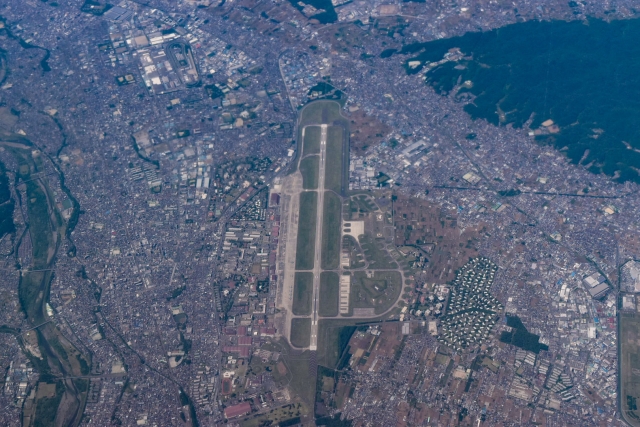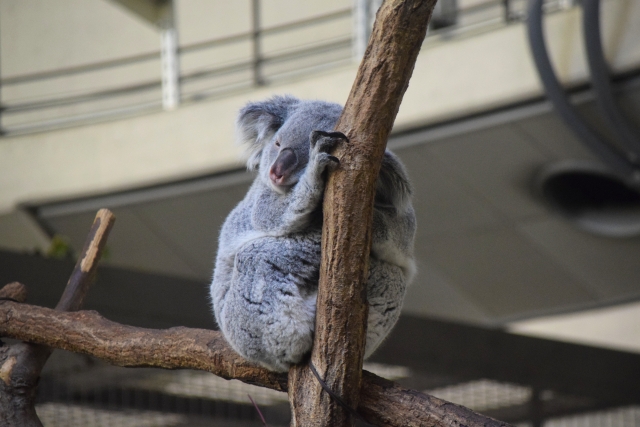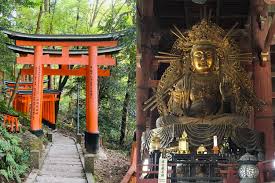There are more than 130 U.S. military bases in Japan, and Yokota Air Base, located in the Tama region of Tokyo, is one of the most well-known of them all.
This is no wonder, as the base covers a total area of approximately 714 hectares and has a runway 3,350 meters long, almost the same length as the runway used at Haneda Airport.
Including military personnel and their families, 9,000 people reside on the base.
If you are looking for a Japanese tutor and Japanese lessons in Yokota, click here.
In this article, we would like to explain the history of Yokota Air Base in Tokyo and the surrounding tourist attractions.
Contents
History of Yokota Air Base, Tokyo
Today, the Yokota Air Base is home to the headquarters of the U.S. Forces in Japan and the 374th Airlift Wing, and has a well-developed lifeline including hospitals, post offices, schools, and a fire station, but it was not a very large facility when it was built in 1940.
It was built and used as an airfield for the former Imperial Japanese Army, but after World War II, in 1945, it came to be used by the U.S., and expansion work has been done frequently.
Initially, it was not called “Yokota Air Base,” but rather “Fussa Airfield” or “Fussa Army Airfield.
The name was officially changed to “Yokota Air Base” in 1946.
Today, Yokota Air Base serves as an important base for the U.S. military in East Asia.
Until February 2012, it was used by the actual U.S. military, but since March 2012, it has also been home to the headquarters of Japan’s Air Self-Defense Force, making it an air base for both the U.S. and Japan.
The base straddles not only Fussa City, Tokyo, but also Mizuho Town, Musashimurayama City, Hamura City, Tachikawa City, Akishima City, and five other cities and one town.
Fussa City, where Yokota Air Base is located, has a very American atmosphere due to the presence of the U.S. military base.
Fussa City has an area called “Bayside Street,” which is dotted with American-style clothing stores and restaurants that serve hamburgers and other items that look like they belong in an American movie.
Naturally, there are many Americans walking the streets, and depending on the timing, you may feel as if you are in the United States.
It is surprising that American dollars can be used in some stores.
Incidentally, Fussa City is also known as the setting of the novel “Blue as Near to Transparent” written by Ryu Murakami, a famous Japanese author.

Sightseeing spots around Yokota Air Base, Tokyo
Americans residing on Yokota Air Base will want to sightsee in Japan on their days off.
There are many sightseeing spots around Yokota Air Base, so let us introduce some of them.
Mt. Takao (takaosan)
If you are looking for a place to climb mountains and enjoy nature in Tokyo, you can’t go wrong with Mt. Takao, which rises 599 meters above sea level.
It has even been selected as a “three-star tourist destination” by Muchelin.
Many people visit the mountain throughout the year, numbering more than 3 million.
Visitors can enjoy hiking, camping, visiting temples and hot springs.
Cable cars and lifts are also available, making it possible to reach the top in about 40 minutes.
Incidentally, from Mt. Takao, you can see the Kanto Plain and Tokyo Bay, and on a clear winter day, you can see beautiful Mt.
Gourmet food is also an enjoyable experience, especially the famous “Tororo Soba” (grated yam).
The park is a great place to enjoy cherry blossoms in the spring, camping in the summer, autumn leaves in the fall, and a spectacular view of Mt.

National Showa Memorial Park (kokueisyouwakinenkouen)
National Showa Memorial Park, located a few kilometers from Yokota Air Base, is also recommended.
The park boasts an area equivalent to 39 Tokyo Domes, and is filled with a variety of attractions in spring, summer, fall, and winter.
Visitors can enjoy tulips, water lilies, sunflowers, autumn leaves, kumquats, sasanquas, plum blossoms, and many other beautiful flowers.
The park also has “gardens” and “bonsai” trees, which Americans who are interested in Japan like to enjoy.
There are also many playground equipment and exploration courses for children to enjoy, so parents and children can have fun together.
For a fee, rental bicycles and park trains are available, so those who “don’t feel like walking a lot” can also enjoy the park in a casual manner.
Tama Zoological Park (tamadoubutukouen)
Tama Zoological Park, located within 10 km of Yokota Air Base, is also highly recommended.
It is one of the largest zoos in Japan, with approximately 300 different species of animals.
The zoo is divided into four zoological gardens: the Asian Garden, the African Garden, the Australian Garden, and the Insect Garden, and is so vast that it is difficult to visit all of them in a single day.
Many popular animals such as red pandas, Bornean orangutans, snow leopards, Shifu elephants, Asian elephants, lions, cheetahs, and koalas are kept here, making it a fun place for children and adults alike.

Conclusion
In this article, we have explained the history of Yokota Air Base, Tokyo and the surrounding tourist attractions.
Yokota Air Base is very famous for being a large U.S. military base in Tokyo, and it functions as an extremely important military base in East Asia.
With approximately 9,000 Americans residing at the base, the area surrounding Yokota Air Base has an American atmosphere.
As mentioned above, the Yokota Air Base area is also rich in leisure spots such as Mt. Takao, National Showa Memorial Park, and Tama Zoological Park.
Foreign residents in the area are encouraged to visit these attractions.
Japanese people who are interested in the area are also welcome to visit “Bayside Street” in Fussa City to experience the American atmosphere.









